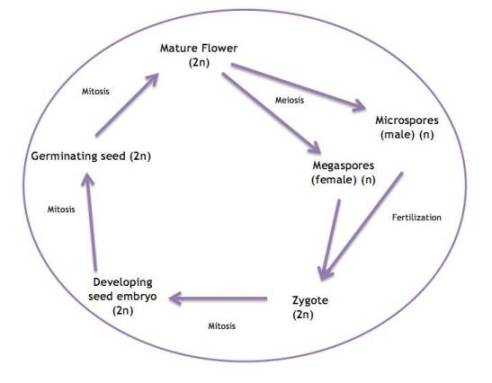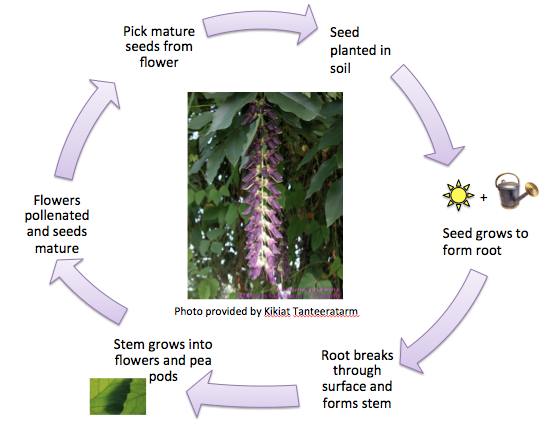Reproduction
HOW DOES A VELVET BEAN REPRODUCE?
The life cycle of the Mucuna species is very similar to the life cycle of a typical bean plant.
This chart was computer generated by Emily Probst. The life cycle of Mucuna varies
from 100 to 290 days, depending on the different species.
The cycle starts with a bean seed. The bean is covered by a hard protective shell called the seed coat. Once the bean is planted, it begins absorbing water and nutrients from the ground. The seed coat softens, and the cells within the seed begin replicating, causing the embryo to grow. As the bean seed continues to grow, the first organ to form, known as the root tip, eventually breaks through the seed covering. The root tip anchors the bean plant to the ground. The development of the stem is the next step of the process. The stem that breaks through the soil is usually in the shape of a hook at first, but with more sunlight, it begins to straighten out. Then the first leaves start to form, and with more sunlight, water and minerals, the bean plant continues to grow more and more leaves. After about six weeks, the bean plant will then start to form flowers, which contain the reproductive parts of the plant, and also the fruit, which is the seedpod of the velvet bean. Transfer of pollen from one velvet bean to another pollinates the flowers. This can be done by wind, water, or by the help of some animals. After pollination, the pods grow from the ovary of the flower, and once the seeds in the pods are mature they can be extracted from the flower and planted for the cycle to continue. For more information about another type of bean, you can learn about the soy bean.
Recall that plants have an alternation of generations life cycle. This means that when the plant is multicellular, there are both haploid (n) and diploid (2n) stages. The chart below explains this in greater detail.

This chart was computer generated by Emily Probst. It shows the life cycle of angiosperms, like the velvet bean.
To find out what organisms influence the life cycle, click Interactions.
